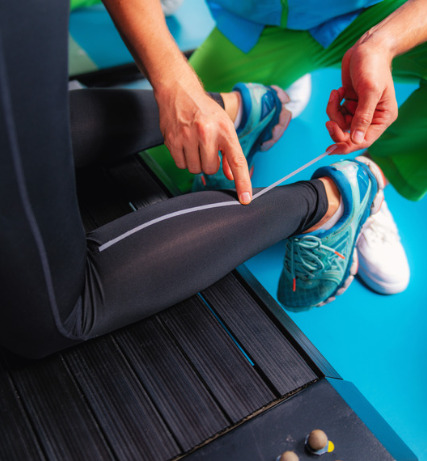The Science of Walking: Gait Analysis
Ever wondered why some people glide through life like they’re walking on air, while others seem to stomp with every step? It’s all in the gait! Gait analysis is the study of how we walk, run, and move and it’s one of those things that most people never think about—until something goes wrong. Whether you’re an athlete, someone recovering from an injury, or just curious about how your body moves, gait analysis can give you important clues about your health and performance.
What Is Gait Analysis?
At its core, gait analysis is the study of how you move when you walk, jog or run. It looks at things like:
- Stride length (how far you travel with each step)
- Step rate (how many steps you take per minute)
- Foot strike (where your foot first hits the ground)
- Posture and alignment (whether your body is in a neutral or altered position)
It’s essentially the “data” of your movement—like taking a snapshot of how you use your body when you’re in motion.
Why Should You Care About Your Gait?
You might be thinking, “Why should I care about how I walk? I’ve been walking for years!” Well, you’re right. Walking is one of those things we all know how to do. But even the way you walk can affect how your body feels. Bad gait mechanics can lead to:
- Foot pain
- Knee pain
- Lower back discomfort
- Injuries (like shin splints or stress fractures)
That’s why gait analysis can be a game-changer. Whether you’re a runner looking to boost performance or just trying to fix that annoying ache in your knee, understanding your gait is the first step toward improvement.
How Gait Analysis Is Done
Usually it involves the following:
- Visual observation – is the most important basic tool for a skilled podiatrist / orthotist / prosthetist. A gait analyst (like a podiatrist) watches how you walk or run and notes any abnormalities.
- Some practitioners like all of the Fan fare and machinery and can use motion capture. Motion capture technology (think: cool camera setups that track your movement) can be used to give data about your gait.
- Pressure plates. Some clinics use pressure-sensitive mats that measure the force distribution in your feet as you walk, helping to identify areas of excessive pressure or strain.
How Gait Analysis Can Help You
Once your gait is analyzed, you can take action to improve your walking patterns and prevent pain or injury. Here are some common solutions:
- Orthotics. Custom and bespoke. In mild cases sometimes over-the-counter insoles can help correct misalignments, provide extra support and reduce pressure points.
- Footwear Recommendations. The right shoes can work wonders for your feet. A gait analysis can help you choose shoes that fit your unique stride, improving comfort and reducing injury risk.
- Physical Therapy. If your gait issues are related to muscle imbalances or injuries, physical therapy can help you strengthen weak areas and improve your movement patterns.
- Running Form Adjustments. For runners, small tweaks to your form (like adjusting your stride or foot strike) can make a huge difference in performance and injury prevention.
Fun Fact: Your Gait is as Unique as Your Fingerprint
No two people have exactly the same gait. Just like your fingerprint, your walking style is uniquely yours. So if you’ve ever wondered why you walk a little differently than your friends or why that one pair of shoes feels perfect while others don’t, it’s all thanks to your personal gait!
We are independent prescribers able to prescribe any medication from the BNF relevant to the lower limb, foot and ankle.
Are you suffering from any hand or foot condition? At The Chelsea Clinic, we can help. One of our podiatrists can assist and then recommend what treatments are best to get you back on track. Podiatrist South Kensington
Schedule an appointment here or you may call us at +44 (0) 207 101 4000.
We hope you have a feetastic day!
-The Chelsea Clinic and Team
Book Here




